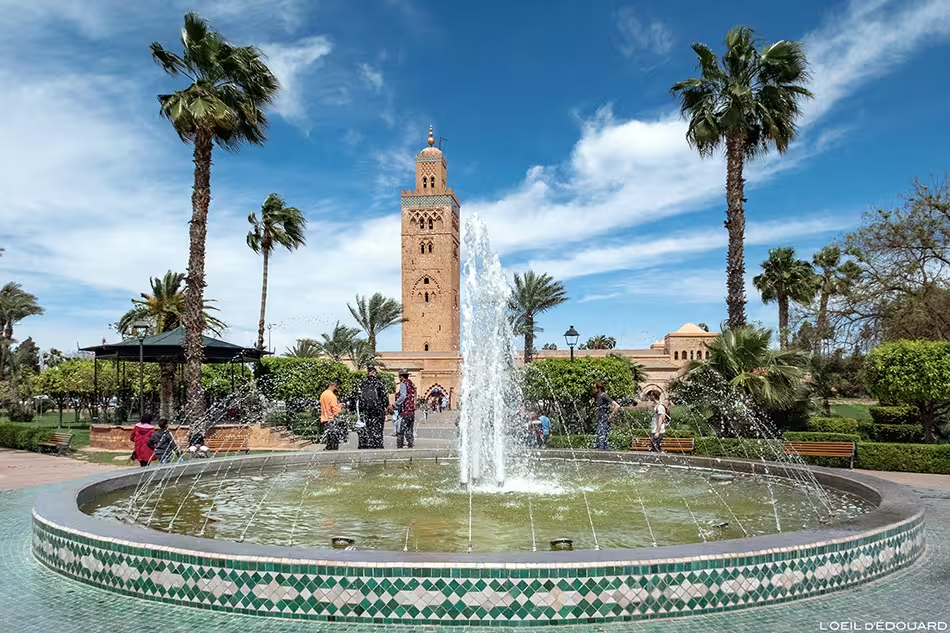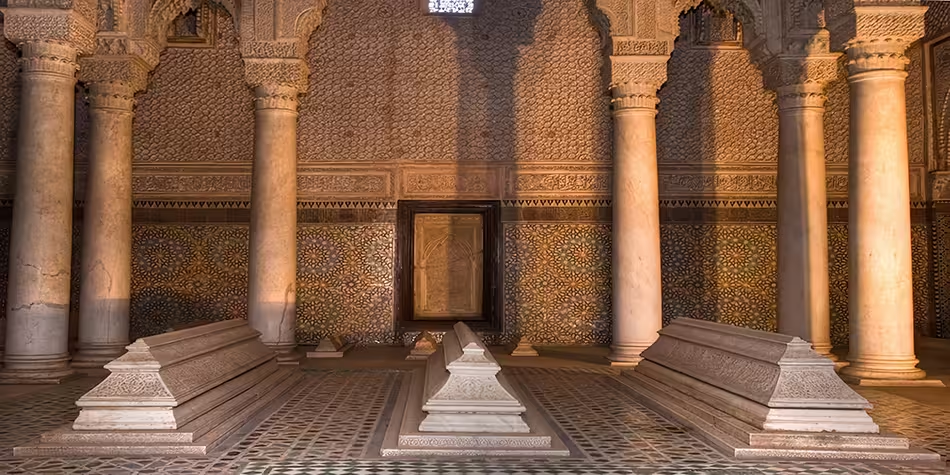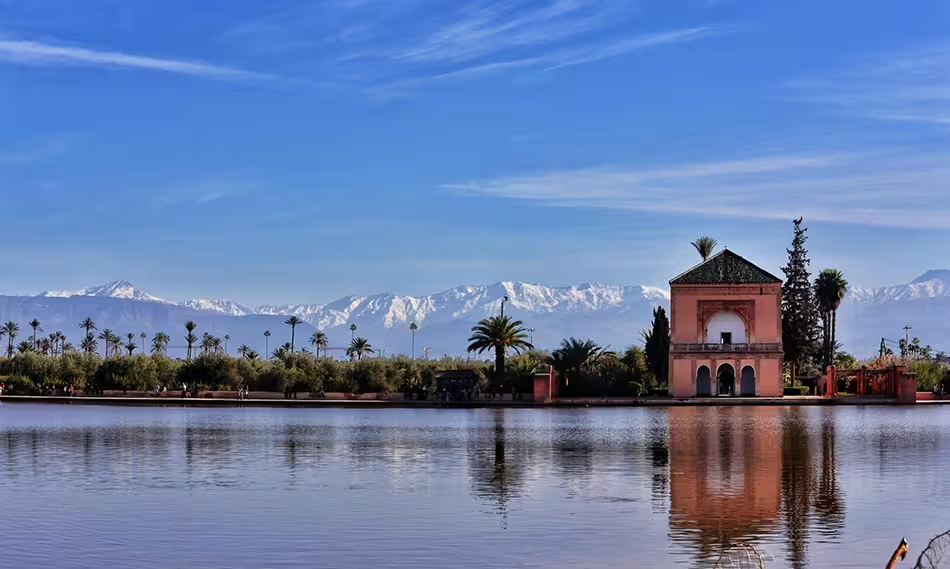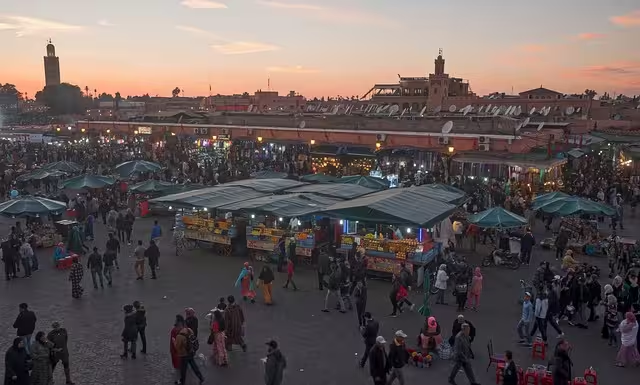
The Saadian tombs
- Tourism
- 2023-11-08

There are many fascinating examples of historic architecture in the Moroccan city of Marrakech. The Saadian Tombs, which are situated close to the well-known Koutoubia Mosque, just outside the medina walls, are among the most fascinating. Constructed in the sixteenth century during the reign of Sultan Ahmad el Mansour, the tombs are today a global tourist destination.
History of tombs
From 1578 to 1603, Ahmad el Mansour, the sixth and most well-known sultan of the Saadi dynasty, ruled Morocco. Murder, scheming, banishment, and warfare characterized his life and reign. All across the city. El Mansour left behind the Saadian tombs, which were finished during his lifetime and used as a cemetery for the sultan and his heirs. El Mansour spared no expense, and the tombs were masterworks of Moroccan architecture and craftsmanship by the time he was buried in 1603.
El Mansour's tombs began to deteriorate after his passing. When Moulay Ismail, an Alawite sultan, came to power in 1672, he began demolishing the monuments and structures that el Mansour had commissioned in an effort to create his own legacy. Despite his desire to honor his ancestors' final resting place, Ismail refrained from damaging the tombs. Rather, he fortified their entrance, resulting in a slender corridor leading into the Koutoubia mosque.
The city's memory of the tombs, their occupants, and their splendor inside gradually faded.
The Saadian tombs were lost to history for more than 200 years until 1917, when French General-Rector Hubert Lyautey ordered an aerial survey that proved their existence. Following a more thorough examination, Lyautey realized the tombs' significance and began the process of restoring them.
Tombs today
The public can now view the remnants of the Saadi dynasty up close by as the tombs are once again accessible. With its elaborate wood carvings, high domed ceilings, and imported marble statues, the complex's architecture is stunning. The skill of 16th-century artisans is demonstrated by the vibrant tile mosaics and latticework plasterwork found throughout the tombs. The 66 tombs in the two main mausoleums are supplemented by the over 100 tombs of the royal family, including trusted advisors, soldiers, and servants, in the rose-filled garden.
Islamic inscriptions are carved on the exterior of these tiny tombs.
The two mausoleums
Towards the left of the complex is the first and most well-known mausoleum. The marble tombs of several Saadian princes are located in the entrance hall, which also functions as El Mansour and his descendants' cemetery. The mausoleum in question also houses the tomb of Moulay Yazid, who was among the select few entombed in Saadian tombs following Moulay Ismail's rule. Yazid, also known as Sultan Mad, ruled for just two years, from 1790 to 1792, during which a terrible civil war occurred.
The lavish tomb of el Mansour himself is the focal point of the first mausoleum, though.
El Mansour and his heirs are divided in the Chamber of Twelve Pillars, a central chamber. Italian Carrara marble is used to carve the pillars, and gilded ornamental plasterwork adorns the structure. The tiling in the el Mansour tombs is flawless, and the doors and screens feature exquisite examples of hand-carving. The tombs of Mohammed ash Sheikh, el Mansour's father, and his mother are located in the second, slightly older mausoleum. In addition to being the father of the Saadi dynasty, Ash Sheikh is well-known for having been assassinated by Ottoman forces in a battle in 1557.


